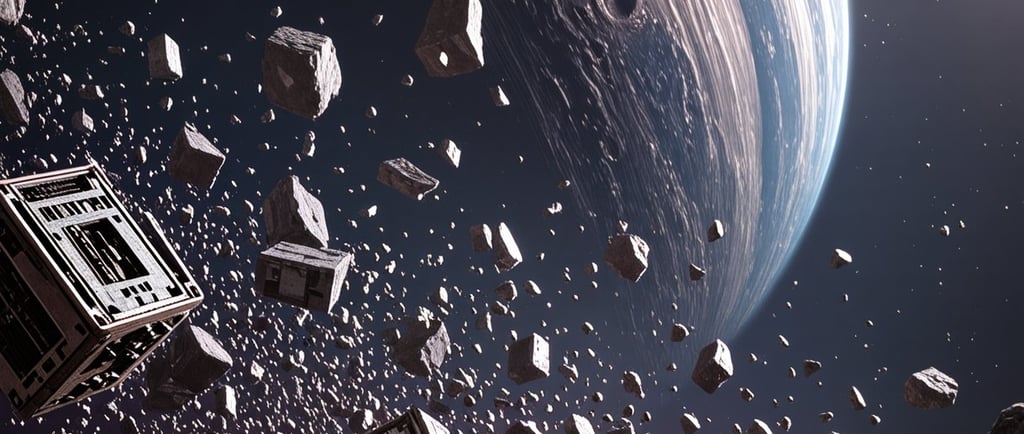The Impacts and Craters of Roaming Debris on Exoplanets


Understanding Roaming Debris in Space
Roaming debris in space, often referred to as space junk, consists of defunct satellites, spent rocket stages, and fragments from previous collisions. This detritus poses significant challenges not only for human-made spacecraft but also for exoplanets. These celestial bodies, orbiting distant stars, may experience their own versions of impacts caused by such debris, potentially influencing their geological and atmospheric characteristics.
Impacts of Debris on Exoplanets
The potential impacts caused by roaming debris can have profound effects on exoplanets. When debris collides with these planetary bodies, the consequences can vary widely. Smaller pieces may cause surface alterations, while larger fragments can result in widespread cratering. The craters formed from these impacts can provide crucial insights into the history and age of an exoplanet's surface, similar to how lunar craters inform our understanding of Earth's early solar system.
Moreover, impacts can also trigger geological activity, such as volcanic eruptions or seismic events, particularly on rocky exoplanets. Such occurrences can lead to atmospherics changes, including the potential release of gases trapped within the surface materials. This process, in turn, can create conditions conducive to the development of an atmosphere, further influencing the evolution of the planet.
The Significance of Craters Beyond Earth
Craters formed from impacts are not simply scars on the planetary surface; they are valuable records of the cosmic environment each exoplanet has endured. By studying these craters, scientists can assess the frequency and magnitude of impacts, thus gaining insights into the dynamic nature of debris in space. Furthermore, the study of craters can aid in understanding the protective capabilities of exoplanets' atmospheres against such threats.
Additionally, these craters might interact with the exoplanet's climate systems. Similar to how Earth’s climate has been influenced by its geological features, craters may alter local weather patterns and surface conditions, potentially affecting any future habitation or exploration missions that may be considered for these distant worlds.
Future Research and Exploration
As the exploration of exoplanets continues to expand, understanding the interactions between roaming debris and these planetary bodies becomes increasingly vital. Future missions aimed at exoplanets should incorporate research on how impacts shape surface conditions and atmospheres. With advancements in our technological capabilities, we are now equipped to study these effects more accurately, enhancing our understanding of planetary formation and the potential for life in different solar environments.
In conclusion, the implications of roaming debris on exoplanets extend beyond simple impact events. The interplay between debris, craters, and geological processes offers a fascinating glimpse into the complex dynamics of planetary systems. As we advance in our exploration of the cosmos, keeping a close eye on these factors will be crucial in the search for life beyond Earth.
